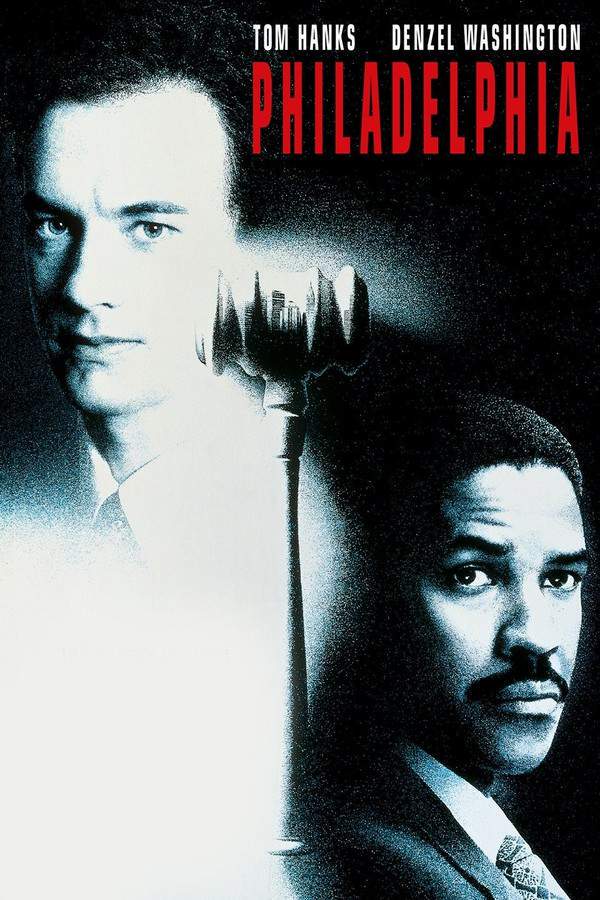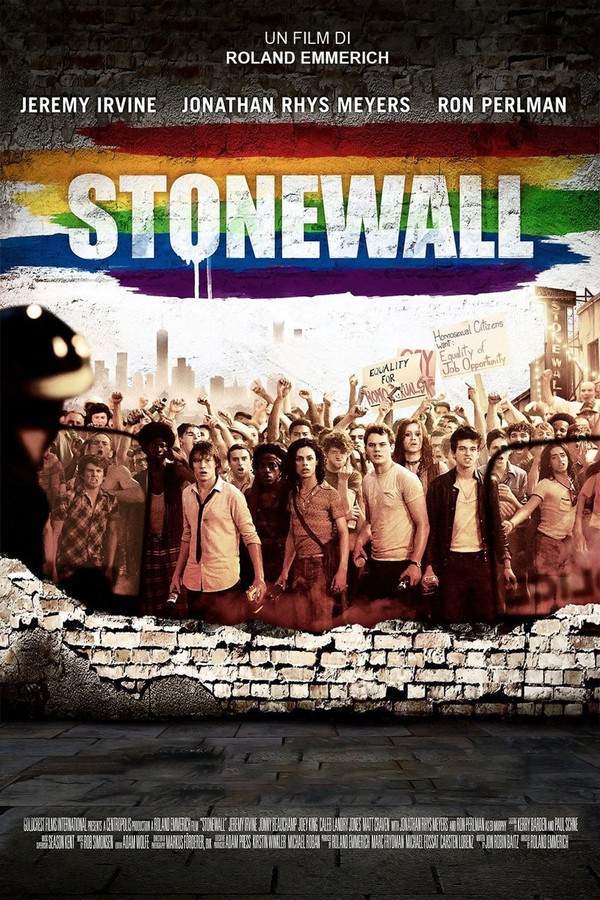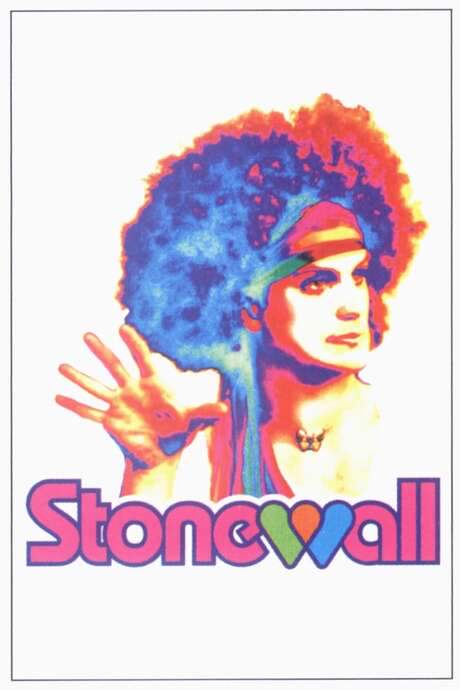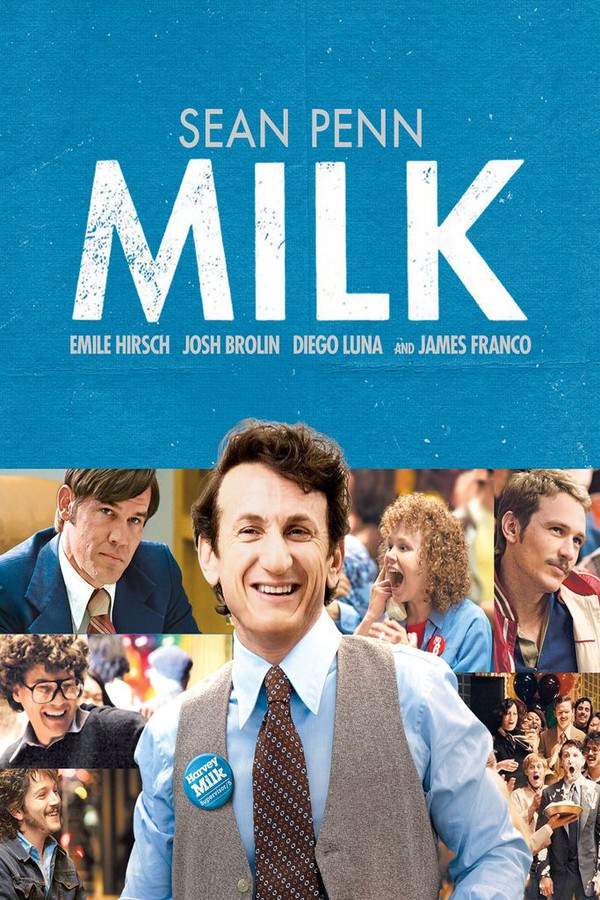
Milk 2008
Directed by
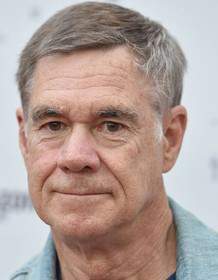
Gus Van Sant
Made by
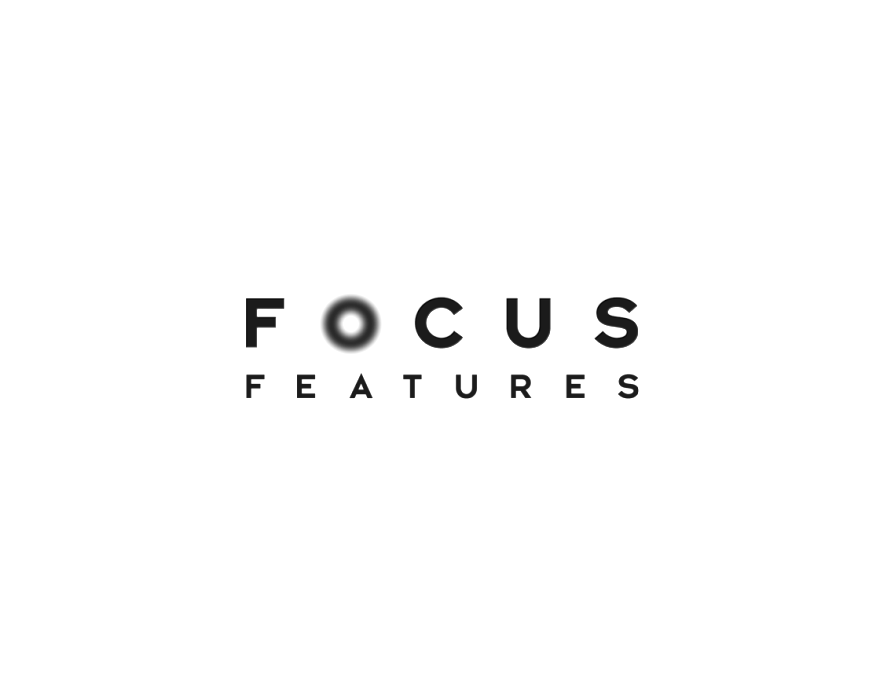
Focus Features
Test your knowledge of Milk with our quiz!
Milk Plot Summary
Read the complete plot summary and ending explained for Milk (2008). From turning points to emotional moments, uncover what really happened and why it matters.
As the film unfolds, the opening credits are accompanied by old black and white newsreel clips from the 1950s and early 1960s, showcasing scenes of men being rounded up by police during raids on gay bars. Headlines proclaim the crackdown on homosexual establishments, with captions such as “Crackdown of Homosexual Bars” and “Men Charged in Taverns.” These well-dressed men, clearly humiliated, cover their faces with their hands while paddy wagons await to haul them away, displaying a chilling glimpse into a life tarnished by shame and aggression.
The narration is delivered by Harvey Milk, recorded in 1978, dictating a letter intended for release only in the event of his assassination. Through his words, we are transported back to significant moments in his life, including stirring speeches delivered to various crowds. In front of LGBTQ+ audiences, he opens with, > “My name is Harvey Milk and I want to recruit you,” while with straight union workers, he jokes, > “My name is Harvey Milk, and sorry I am not what you expected, but I left my high heels at home.”
Milk emphasizes the visibility that gay activists must endure as targets of violence. A startling clip features a young Diane Feinstein, who announces the tragic assassinations of Milk and San Francisco Mayor George Moscone. As Milk narrates his heartfelt letter, he takes us chronologically through vital moments in his journey, starting in 1970 New York.
In the bustling city, Milk, impeccably dressed in a vintage gray suit, is instantly drawn to a younger man, Scott Smith, at a New York subway station. In a bold move, Milk introduces himself, initiating a conversation filled with charm and humor about his upcoming 40th birthday. Their flirtation culminates in an unexpected kiss, shortly after Scott expresses his hesitance towards dating older men—a charming complication as Milk playfully reveals, “Well, today’s my lucky day because I’m 39 until 12:01 tonight.”
Flash forwarding through their blossoming romance, Milk and Smith share a life filled with warm moments—from intimate conversations about the challenges of gay life in 1970s New York to the opening of their camera shop, “Castro Camera”, in the Castro neighborhood. Their shared happiness, however, is not without conflict. When a liquor store owner, displeased by their presence, warns them of police trouble, Milk assures him that opening a business is not illegal, signaling the slow rise of gay visibility and activism in the area.
With the “Castro Camera” serving as a haven, Milk realizes the power of uniting the LGBTQ+ community through support for local businesses. This turning point inspires him to create lists of gay-friendly establishments to advocate for economic solidarity. The camera shop becomes a hub for young activists like Danny Nicolletta, Jim Revaldo, and Cleve Jones, who all gravitate to Milk while he juggles both his personal and political life.
As tensions between the LGBTQ+ community and police escalate, Milk organizes a movement to challenge the mistreatment of gay citizens, standing firmly on a soapbox to declare, “I’m here, so I’m going to get attention.” He throws his hat into the political ring, campaigning to become the first openly gay man elected to office in the United States. Despite initial setbacks in his political pursuits, he learns valuable lessons and grows closer to accomplishing his vision with each campaign.
His activism reaches a boiling point with the rise of the Californian Assemblyman and the arrival of Proposition 6, aiming to ban gay teachers. In a series of confrontations and high-profile debates, Milk rallies the community to resist these discriminatory measures, shouting, “My name is Harvey Milk and I want to recruit you!”
As Milk’s influence grows, so do the challenges in his personal life. Jack, a new love interest, adds complexity to the narrative, introducing themes of loyalty and chaos. As his campaigns rise and fall, tragedy strikes when Jack succumbs to a serious mental illness. In poignant moments, Milk reflects on the men in his life, knowing Scott Smith was his true love.
Throughout it all, Dan White, Milk’s political peer, sits on the other side of apathy and tragedy, eventually culminating in a heartbreaking confrontation where Milk is taken from the world too soon. The film ends with a powerful memorial, illustrating how Milk’s legacy inspired a generation of activists, reminding us that his struggles for equality extend far beyond the LGBTQ+ community and touch upon universal hopes for justice.
In the flickering candlelight that rivaled the stars, Milk’s dream of solidarity emerges, urging people to unite against persecution and stand tall for their rights. His life and fight become a beacon of hope for countless “Us-es” around the world, driving home the message that hope and resilience are paramount in the face of adversity.
Milk Timeline
Follow the complete movie timeline of Milk (2008) with every major event in chronological order. Great for understanding complex plots and story progression.
Opening Newsreel Clips
The movie opens with old black and white newsreel clips from the 1950s and early 1960s, showcasing the dismal reality of police raids on gay bars. Headlines reveal a society grappling with the persecution of homosexual individuals, highlighting the shame and humiliation experienced by those rounded up during these crackdowns.
Harvey Milk's Recorded Letter
Harvey Milk’s narration is introduced as he dictates a poignant letter intended for release only in the event of his assassination. Through this letter, he recalls key moments throughout his life, offering insights into his experiences and aspirations as both a community leader and a target of violence against LGBTQ+ individuals.
First Encounter with Scott Smith
Set in the lively atmosphere of New York City, Milk meets Scott Smith at a subway station. Their flirtation is charming and flirtatious, culminating in an unexpected kiss as Milk playfully navigates the complexities of dating someone much younger.
Opening of Castro Camera
As Milk's relationship with Scott blossoms, they open their camera shop, 'Castro Camera,' in the Castro neighborhood. This shop becomes a vital space for the LGBTQ+ community, symbolizing both their shared happiness and the initial steps towards mobilizing activism.
Confrontation with Liquor Store Owner
Tensions arise when a local liquor store owner expresses displeasure at Milk and Scott's presence, hinting at potential police trouble. Milk stands firm, asserting their right to operate a business, signaling the growing visibility and resistance of the gay community.
Creating Lists of Gay-Friendly Establishments
Recognizing the power of community support, Milk begins compiling lists of gay-friendly businesses to foster economic solidarity among the LGBTQ+ community. This initiative reflects his growing commitment to activism and uniting individuals around a common cause.
Formation of the LGBTQ+ Activist Community
The Castro Camera shop fosters a sense of camaraderie among young activists like Danny Nicolletta and Cleve Jones, who rally around Milk's leadership. This marks a significant shift in the movement, allowing activists to organize and push for change more effectively.
Milk's Political Aspirations
With mounting frustrations from the LGBTQ+ community, Milk takes the courageous step to run for political office as the first openly gay man. Despite facing major setbacks, these campaigns become a transformative journey that shapes his identity and mission.
Opposition to Proposition 6
Proposition 6 emerges, aiming to ban gay teachers, igniting a fierce political battle. Milk rallies the community, utilizing high-profile debates and passionate speeches to motivate and mobilize resistance against this discriminatory policy.
The Complexity of Relationships
As Milk's political life flourishes, his personal life faces challenges with the introduction of Jack, a new love interest. The relationship deepens his narrative, intertwined with themes of loyalty, love, and tragic loss as Jack battles mental illness.
Tragic Loss of Jack
Milk experiences heartbreak with the tragic passing of Jack, who succumbs to mental illness. This moment serves as a poignant reminder of the personal costs intertwined with public activism and the struggles faced within the LGBTQ+ community.
Confrontation with Dan White
Tensions escalate as Dan White, Milk’s political peer, emerges in the narrative, reflecting the apathy and danger surrounding Milk's activism. A heartbreaking confrontation ultimately leads to profound consequences, marking a turning point in the story.
The Assassination of Milk
The film reaches a tragic climax as Harvey Milk is assassinated, alongside San Francisco Mayor George Moscone. This pivotal moment not only devastates the community but also galvanizes further action and activism within the LGBTQ+ rights movement.
Legacy and Memorial
In the wake of Milk’s death, a powerful memorial serves as a tribute to his enduring legacy and the inspiration he provided to countless activists. His life becomes a symbol of hope, resilience, and the ongoing struggle for justice and equality.
Call to Unity
The film concludes with a strong message urging unity against persecution. Milk's dream of solidarity inspires a new generation, reinforcing the importance of standing tall for rights, hope, and resilience in the face of adversity.
Milk Characters
Explore all characters from Milk (2008). Get detailed profiles with their roles, arcs, and key relationships explained.
Harvey Milk
Harvey Milk, portrayed as a charismatic and passionate activist, is the film's central character. He is determined to break barriers as the first openly gay man elected to office in the U.S. His journey is marked by his advocacy for LGBTQ+ rights, a commitment to community support, and his personal struggles with love and loss. Milk's vibrant personality and unwavering resolve inspire those around him.
Scott Smith
Scott Smith is portrayed as Harvey Milk's love interest, representing both affection and the challenges of navigating relationships in a tumultuous time. His character adds depth to Milk's personal journey, illuminating themes of romance and hesitance related to age. Smith's relationship with Milk serves as a backdrop for exploring broader LGBTQ+ experiences in that era.
Dan White
Dan White serves as a contrasting figure to Milk, illustrating the political and personal tensions of the time. His character embodies apathy and the eventual tragic conflict that arises between him and Milk. White's story underscores the film's themes of tragedy and the harsh realities of the fight for equality, culminating in a heartbreaking confrontation.
Milk Settings
Learn where and when Milk (2008) takes place. Explore the film’s settings, era, and how they shape the narrative.
Time period
1970s, 1980s
The film spans the 1970s to the early 1980s, a pivotal era for LGBTQ+ rights in the United States. This period witnessed significant societal change, focusing on the fight against discrimination and the push for recognition in politics. Events such as the rise of activism against Proposition 6 are central to the narrative, reflecting larger societal struggles for equality.
Location
San Francisco, New York
The movie predominantly takes place in San Francisco, a city known for its vibrant LGBTQ+ community and activism during the 1970s. San Francisco, particularly the Castro neighborhood, became a focal point for gay rights movements, with establishments like Castro Camera serving as safe havens for activists. New York also plays a significant role, depicted in scenes highlighting the initial romance between Harvey Milk and Scott Smith.
Milk Themes
Discover the main themes in Milk (2008). Analyze the deeper meanings, emotional layers, and social commentary behind the film.
✊
Activism
Activism is a core theme of the film, showcasing Harvey Milk's relentless fight for LGBTQ+ rights and representation. He mobilizes the community against systemic oppression and discrimination, serving as a pioneer for future generations. The film emphasizes the importance of visibility, solidarity, and resilience in the face of adversity.
💔
Love and Loss
The film explores complex dynamics of love and companionship, particularly through Milk's relationships with Scott Smith and Jack. It poignantly addresses themes of loyalty and heartbreak, highlighting how personal relationships intertwine with broader societal issues. The impact of loss becomes a driving force in Milk’s life, shaping his activism.
🌈
Identity
Identity plays a significant role in the film, touching on issues such as self-acceptance and the struggles faced by LGBTQ+ individuals in a prejudiced society. Through Harvey Milk's journey, the film illustrates the importance of embracing one's identity while advocating for the rights of others. It serves as a powerful reminder of the ongoing fight for visibility and acceptance.

Coming soon on iOS and Android
The Plot Explained Mobile App
From blockbusters to hidden gems — dive into movie stories anytime, anywhere. Save your favorites, discover plots faster, and never miss a twist again.
Sign up to be the first to know when we launch. Your email stays private — always.
Milk Spoiler-Free Summary
Discover the spoiler-free summary of Milk (2008). Get a concise overview without any spoilers.
In the late‑1970s, a city perched on the edge of the Pacific becomes a vibrant laboratory for change, its streets humming with the clatter of camera shutters, the chatter of activists, and the soft glow of neon signs in a neighborhood that refuses to be invisible. The film paints San Francisco as both a refuge and a battlefield, where the fight for basic dignity is woven into everyday life—coffee shops, storefronts, and community meetings all pulse with the promise and the tension of a movement still finding its voice. The tone is warm yet urgent, balancing the tenderness of personal connections with the fierce energy of a people demanding to be seen.
At the heart of this world stands Harvey Milk, an exuberant figure whose charisma and optimism illuminate the screen. He is introduced not as a polished politician, but as a charismatic shopkeeper with a sharp sense of humor, a knack for rallying strangers, and an unshakable belief that visibility is a form of power. His narration, recorded as a personal letter, lends the story a reflective, almost poetic quality, inviting the audience to see the city through his hopeful eyes while hinting at the challenges that lie ahead.
Supporting him is a close‑knit circle that includes Scott Smith, a younger man whose partnership with Milk adds layers of intimacy and companionship, and a cast of emerging activists who gravitate toward the camera shop that becomes an unlikely hub for community organizing. Their interactions are marked by witty banter, earnest discussions about identity, and a shared commitment to building economic solidarity and cultural pride.
Together, these characters navigate the colorful yet precarious landscape of a time when ordinary citizens could become catalysts for extraordinary social transformation. The film’s style—rich with period detail, interspersed newsreel footage, and a soundtrack that captures the era’s optimism—creates an immersive portrait of a city on the brink of historic change, leaving viewers eager to discover how these passionate voices will shape the future.
Can’t find your movie? Request a summary here.
Movies with Similar Twists and Themes
Uncover films that echo the narrative beats, emotional arcs, or dramatic twists of the one you're exploring. These recommendations are handpicked based on story depth, thematic resonance, and spoiler-worthy moments — perfect for fans who crave more of the same intrigue.
Featured on this page

What's After the Movie?
Not sure whether to stay after the credits? Find out!
Explore Our Movie Platform
New Movie Releases (2025)
Famous Movie Actors
Top Film Production Studios
Movie Plot Summaries & Endings
Major Movie Awards & Winners
Best Concert Films & Music Documentaries
Movie Collections and Curated Lists
© 2025 What's After the Movie. All rights reserved.


